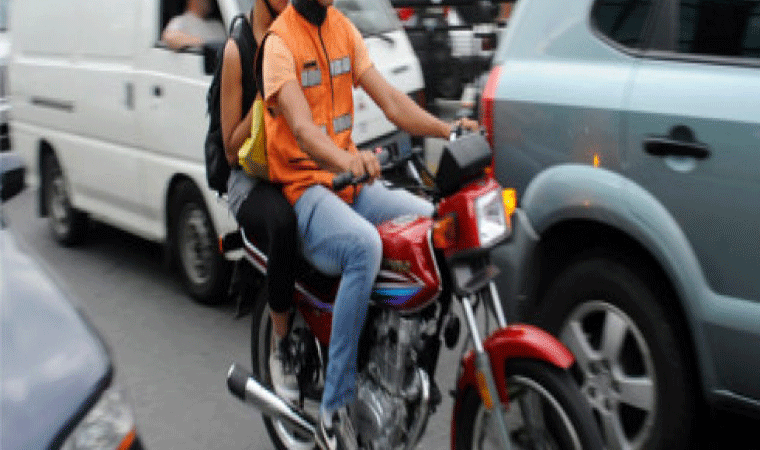Colombia has been going through a lot recently. Honestly, I look around and I think the world is going through a lot right now. And perhaps it always has.
What have the protests in Colombia been about? Anybody who watches international news or claims some awareness of world events (even by glimpsing it via memes or article clickbait) knows that in South America there have been a lot of protests. Chile was the first place I recalled getting a lot of attention. Colombians were soon to follow.
The simple answer to this question is that: they are protesting what people are always protesting in capitalist societies. Education is undervalued and underfunded. Teachers, including university professors, are underpaid or even not paid at all (much less on time) for months. There is a notorious problem in Colombia with the unequal exchange of services for money. Most consumers still seem accustomed to the system upon which the Americas was sadly founded: slavery. They want your labor and the product of it for free, or at least for dirt cheap.
I can’t begin to tell you (although I know it falls into the category of anecdotal evidence, but still) the number of people I know which work in the service industry for scraps – and then their employers don’t pay them a full wage. And it’s almost never paid within the agreed upon time frame.
So yes, economic unrest. Another issue seen in the States as well as here is the cutting of pensions and social security. This has a negative impact on the old and those planning to retire. Although they may have worked hard every day for their entire lives, they are expected to be happy with making a minimum or less wage. Not to mention that minimum wage in Colombia is only 800.000 some pesos – that’s well less than $300 USD – and the economic reform people are protesting called for that amount to be cut by 75%.
Many cities (like Valledupar) are in crisis because of an influx of refugees, a lack of institutions in place to manage them, and the strain this interaction has caused in already fragile border economies. Now the poorest of the working class is forced to compete with desperate refugees who legally cannot be hired, have families to take care of, and therefore are willing to work for the bare minimum of the bare minimum in order to survive.
The effect of this is obvious: whenever a local person demands their pay, the employer cuts them off and replaces them with a desperate refugee, not unlike what has been seen in the Southern region of the states when refugees surge. The cities become more and more poor as Colombians feel more and more resentment towards incoming foreigners. Many are tired of the government’s weak approach to handling labor laws and accommodating (or not) for refugee populations.
Those community leaders who have struggled to give their people a voice are quickly snuffed. Violence (paramilitary and police and otherwise) is rampant, with no acknowledgment of a peace settlement with the radical guerrilleros in sight.
But my question, looking at the situation here, is who wouldn’t be radical? Accepting these conditions is absurd. I watch my friends unable to find jobs when they have degrees in a myriad of subjects – the same thing that is happening in the states right now. I watch degrees postponed due to on-going strikes because teachers aren’t given a decent salary – much less paid on time.
That led to the protesting, which has been on-going since November 21st (21N makes reference to the 21st of November). It was launched in universities, especially, all over the country after minors were killed by the military in a community once dominated by the FARC. Only 2 days after the protests began, a 17 year old was killed in a protest at the hands of the police who were shooting grenades into the crowd. Bogota and other cities became militarized – supposedly for the protection and safety of the people, but the feeling of those protesting was anything but one of safety. The violence had gotten so bad, the disgust with Duque, and the cut to social service packages in the country, that these peaceful strikes were mixed with some intense displays of frustration. I’ve heard and seen some destruction caused in major cities like Bogota and Cali, but rumors claim that the police and paramilitaries are just as likely behind this as individuals that mar the image of the Paro.
A problem the world over is the people on top telling the people that are suffering on the bottom how they should react to their own oppression. What’s the “right” way to protest. For the most part, people have followed the law while standing firm in their rights and convictions. During the weekend following 21N I attended several protests, all peaceful, but equally trembling with outrage at the actions and attitude of the Colombian government and military. Dry laws were set up during the weekend of the initial strikes, assuming that drinking would lead to hooliganism among the protesters. In some cities, curfews were established to keep people in their homes or else face the impunity of the police as they squash the backlash – I mean, maintain order.
I attended a Velaton, an event where everyone lit a candle outside of the city hall, chanting, remembering those social leaders that have fallen defending their rights, a muted cry for justice and an end to Duque’s presidency. Some do not wish for it to end considering him legally and democratically elected, but do assert that more needs to be done to fix the mess of reforms and address the big problems.
Duque himself has been something of a puppeteer in the eyes of the Colombians. Currently he has around a 28% approval rating. He is a young – 43 years old – the youngest president Colombia has had – and a clear ally of controversial political figures like Alvaro Uribe. Uribe’s regime (to give you an idea) consisted in lots of paramilitary violence and covering up of injustices committed to silence communities disadvantaged under his regime – indigenous, AfroColombian, workers, women, guerrillas – which the rest who protested were defaulted. He’s a “liberal” in the neoliberal sense, and held power officially for 8 years. His legacy continues, and that’s why most do not trust Duque to actually be acting and thinking on his own. Because in spite of all of this, Uribe has a cult following – which mainly falls into two ironic camps: the very poor and the very rich.
Sounding familiar to any US Americans out there? I know to me it does. In many of these post-colonial countries, and even the colonizers, the population is divided into two camps: haves and have-nots, landowners and laborers. Well, Uribe and Duque represent the landowners, and their treatment of people outside of their class has been violent and atrocious, at best. The amount of corruption in institutions like schools and among the police has gone up remarkably.
21N started with a march. Just a marching of all that identify with the movement – the poor, working, and middle class, teachers, professors, Afrocolombianos, indigenous people, elderly, women – and yes, even foreigners like me. I look at these issues and I see world issues reflecting in every story, the same pattern. I know this pattern did not start with the corruption here. If anything, it has a foreign sponsor – the US, lest we forget the US’s own intervention in the 90’s and early 2000’s.
I could write a book, and books have been written (Colombia: The Drug Wars is a great place to start. But suffice it to stay, I stand with the Paro Nacional. I stand with Paros all over the world – Paris was in the middle of one when I went early this month, mainly for the same reasons. It’s a lot of data, and a lot to take in – more complex than this simple summary from my perspective that I have written here. But it matters. And it needs international attention.
Right now, the Paro is rebooting. It’s still standing firm on the same issues, which have not improved or even been addressed as far as anyone can tell. Protesting is a long, harrowing path. One mustn’t wonder why some would rather fight bloody wars to be treated fairly and be able to live in peace. It’s a contradiction, but when the mechanism of power is so strong that even workers all over are unable to cease to work without dying, where even when they stop working, they are ignored (let them die, the attitude seems, fewer to worry about), well, sometimes it’s even led me to ask myself: what more can be done?
The most cathartic part of that paro weekend was the Cacerolazo – a term coined in reference to when Latin Americans take to the streets with pots and pans, banging them in a cacophony of protest (there’s a long history of this in Latin America – I felt pretty tripped out participating in something I’d only read about in Latin American history classes before). We met in Parque Viajero, a haunt in the heart of the city where young people usually gather to smoke and talk. Some usually play dominoes there or share their music or a drink. That night, it was Sunday, and yet the park was full. All because of the Bailaton, or dance off that was proposed as part of the continued strike.
Many cannot afford to stop working. Many do not even have work. So what’s left is causing a small disturbance to remind everyone around them of why people are protesting. Many chanted angrily about the president, about the slaughter of social leaders, about the lies and corruption, as the throng struck their pots and pans in a war-like rhythm. People are tired, tired of not having a voice or agency in their society. Of not having a future. Of not having employable prospects, unless they choose to leave or know the right people. People are tired. Of how unsustainable our situation has become.
And not only in Colombia – the world is feeling the same strain. We must be willing break that which is already broken, to revolt, to create something new, a mix within the mess. And that’s what the people of Colombia who are protesting hope for, trapped in a Sisyphusian cycle of struggle and pushback in order to attain it.
![Nómada [con] Rumbo](https://nomadaconrumbo.com/wp-content/uploads/2021/04/cropped-dsc07640.jpg)























